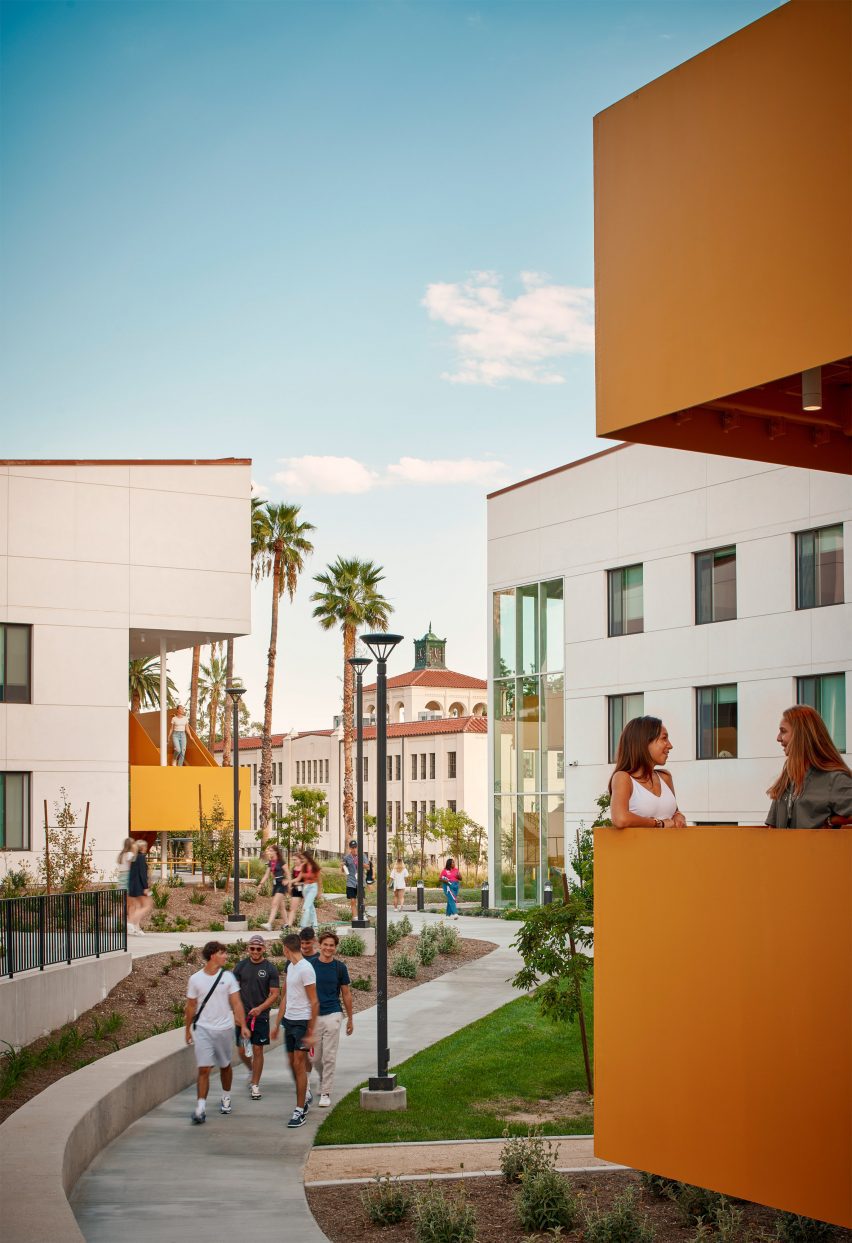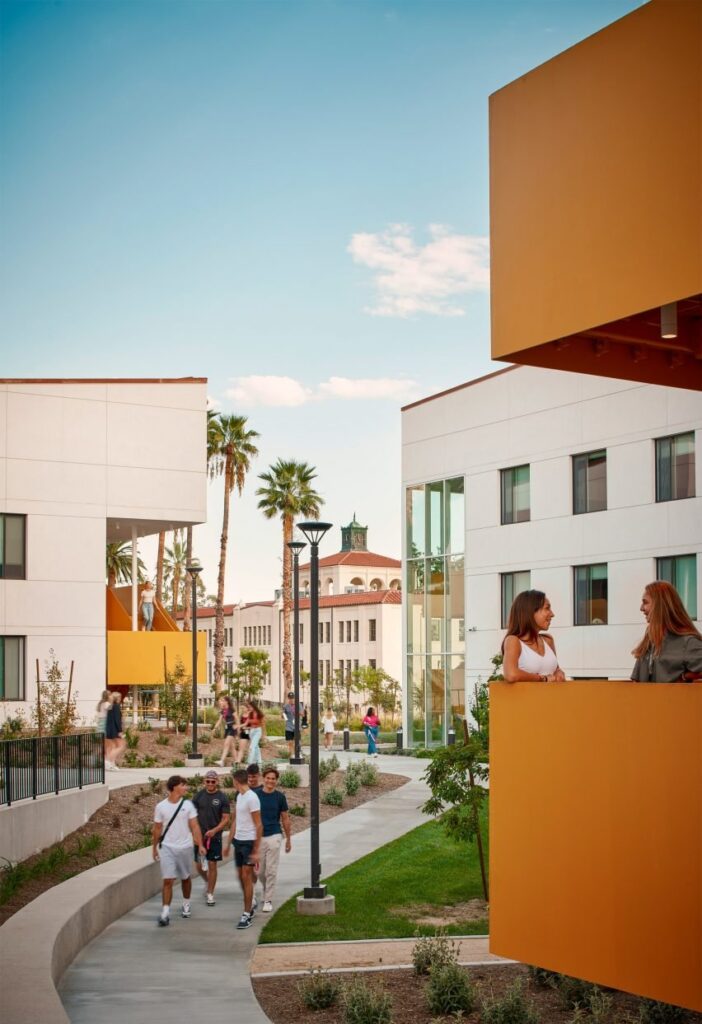American firm Gensler and an in-house team at the Swiss company EF Education First have updated a historic school campus in Pasadena by renovating buildings and adding new dormitories with roofs that allude to a nearby mountain range.
The campus is operated by the Zurich-based company EF Education First and is described by the team as the “first new private boarding school to open in SoCal in decades”.

The site has 11 buildings, plus a soccer field, basketball and volleyball courts, and park-like green space. It is located just north of Los Angeles in the city of Pasadena.
In 2019, the Swiss education company bought the 15-acre (six-hectare) property, which features century-old, Spanish revival-style structures. The site was formerly the home of a faith-based university.
The company’s design and architecture department – working with Gensler – set out to update the site to make it suitable for a new EF Academy.
The Pasadena school is designed to accommodate 1,200 students and 150 faculty and staff members.
Students can commute to the school or live on campus, either full-time or on weekdays.
Among the team’s design goals were integrating the campus with the landscape and creating a welcoming atmosphere for a diverse mix of users.
“Our overarching design mandate was to make EF Academy, and the city of Pasadena, feel like home to people from so many places,” the team said.
The team decided to demolish certain structures in poor condition and renovate six buildings, including the century-old McGavran Hall (now called Strong Hall). Five buildings were newly constructed, four of which are student dormitories.
“Every building on the site was renovated with sensitivity to their respective period and architecture, taking care to retain the original character,” the team said.
“Newly constructed buildings, such as the student residences, were then designed to complement these existing buildings.”
“We wanted to make the space feel like a collection of buildings rather than something that had been made all at once,” the team added.
The circulation on campus was improved, and building entrances were oriented toward a central quad rather than streets. Providing opportunities for social interaction was a paramount concern.
“We wanted to adapt the campus – originally catering towards cars and commuters – to a true community hub,” the team said.
“In addition to the expected – classrooms, science labs, maker spaces and art studios – it was important that the whole campus function as a place for casual conversations and inspired learning.”
The four dormitories were placed on the western edge of campus.
Either U-shaped and L-shaped in plan, the buildings have intimate courtyards that “contrast the public nature of the main quad”, but still provide views of the larger campus. Their rooflines take cues from the nearby San Gabriel mountains.
The dormitory buildings are designed to be flexible, with layouts that can be modified as needed. Materials were chosen for their ability to stand the test of time.
“We chose timeless materials – steel, concrete and stucco – that fit with the local vernacular and can easily be maintained and repainted as tastes change,” the team said.
The school also acquired 16 residential properties around campus and converted them into housing for faculty and staff members. Having employees live close to campus helps reduce automobile usage and parking needs, the team said.
The campus has a number of sustainable features, including reflective roofs and ample use of daylight. The team incorporated drought-tolerant landscaping and added trees to reduce the heat-island effect.
EF Education First is among the world’s largest private international education organizations. Founded in 1965, it now operates in 116 countries and offers a range of services, including degree programmes, cultural exchanges, language learning and educational tours.
Other EF facilities include an office in Denver that aligns with the city’s “outdoorsy culture” through elements such as log cabin-inspired seating, a reception desk made of rammed earth and a brownish-red canopy that evokes sandstone outcroppings.
The photography is by Ryan Gobuty of EF Education First.

